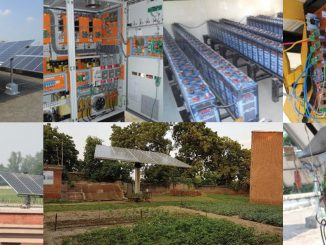
Despite a booming solar photovoltaic (PV) market, the solar thermal industry in India was able to increase sales by as much as 17 per cent in 2018. The industry sold 5.85 million vacuum tubes during the year as against 4.59 million in 2017, with Chinese imports increasing by 28 per cent. By contrast, flat plate collector sales dropped 46 per cent (147 MWth) over 2017 (278 MWth), which was the peak year.
This shift from flat plate collectors to vacuum tubes was on account of cost advantages. The key system materials used in flat plate collectors, namely, copper and glass, became more expensive last year. Had it not been for the popular PV systems that took up much of the available roof space, the increase in cost would have been even higher as expected by the Solar Thermal Federation of India.
There are only a few manufacturers in the flat plate collector industry. The largest one is Emmvee Solar Systems, which has been in the business since 1992 though it has changed hands several times. Bhagyanagar Industries, India’s biggest fin manufacturer, enjoys a near monopoly in the delivery of coated absorber fins to collector assemblers in the country.
 As per figures provided by authorised agencies, from January to December 2018, 5,854,000 vacuum tubes were imported for low temperature applications under four HS (Harmonised System) codes. Tubes measuring 58 mm by 1,800 mm were used in 77 per cent of the systems sold in the market, while 58 mm by 2,100 mm tubes were found in 21 per cent of all installations.
As per figures provided by authorised agencies, from January to December 2018, 5,854,000 vacuum tubes were imported for low temperature applications under four HS (Harmonised System) codes. Tubes measuring 58 mm by 1,800 mm were used in 77 per cent of the systems sold in the market, while 58 mm by 2,100 mm tubes were found in 21 per cent of all installations.
However, commercial systems, which include concentrating solar collectors or vacuum tubes with compound parabolic concentrators, reduced in number in 2018 despite the government offering 30 per cent subsidy. This was because a number of attractive PV solutions occupied much of the rooftop space on industrial plants. Data provided by the Ministry of New and Renewable Energy shows that around 4,500 square metres of collector area was commissioned in 2018, down from 5,643 square metres commissioned in 2017. The majority of the new systems were installed in the solar thermal cooking space, which contributed almost 60 per cent to the total sales, while solar heating and cooling for industrial processes accounted for about 30 per cent and 10 per cent respectively.
 Installations for solar cooking have dominated the incentive programme since its launch in 2012. It accounts for 63 per cent of the total applications. It is followed by process heat, making up 25 per cent of all subsidised systems. Solar cooling and air- conditioning systems at 13 per cent are much fewer. That said, these systems are often larger than the other systems, covering an average area of 679 square metres.
Installations for solar cooking have dominated the incentive programme since its launch in 2012. It accounts for 63 per cent of the total applications. It is followed by process heat, making up 25 per cent of all subsidised systems. Solar cooling and air- conditioning systems at 13 per cent are much fewer. That said, these systems are often larger than the other systems, covering an average area of 679 square metres.
The article has been contributed by Jaideep Malaviya, Secretary General, Solar Thermal Federation of India



